It’s time for early-season Canada goose. In this premiere episode of “The X,” Realtree’s new all-waterfowl hunting show, the guys from Fowled Reality head over to New York. The Empire State offers some of the best goose-hunting opportunities around, with a 15-goose-per-man daily limit. Check out the action as the team finds a plethora of opportunities abounding in the fields, in this first episode of “The X.”
Hunting Cheaper Than Other Sports
Hunting is fun, adventurous, fulfilling, motivating and a host of other adjectives, not to mention physically and mentally stimulating.
If you’re an avid hunter, you may wonder if those license fees and the costs of those expensive broadheads are mounting up excessively.
Hunters, take heart. According to a new study by the National Shooting Sports Foundation, hunting is less expensive then several other popular pastimes, in some cases much less expensive. Plus, this doesn’t consider the value of the game you bring home for the table.
Check out the facts for your state in this report by the NSSF.
We’re sure you know that a day spent hunting beats a day in the office. What you might not know, though, is that a day spent hunting in many cases is more affordable than a day spent on the golf course or at a major league ballgame.
That’s something to keep in mind with National Hunting and Fishing Day coming up on Saturday, Sept. 27. Many opportunities nationwide are available to spend a day afield that weekend.
Statistics in NSSF’s latest report, “Hunting in the 50 States: Regulations, License Fees, Species and Methods of Take,” clearly show that you get more bang for your buck hunting than in other competing hobbies and activities.
Making Decisions About Your Fish Pond
Small impoundments are an important resource in our country. If managed correctly, ponds can provide higher catch rates of quality-size fish than larger lakes and rivers. Consequently, many children and first-time anglers become “hooked” on fishing in ponds; however, many ponds are under-utilized because they are not managed correctly to meet the pond owner’s budgeted goals.
Pond owners today are faced with so many choices that they often become confused as to what they should do to create and maintain a fish pond that meets their expectations. A vast amount of information is available to pond owners covering every aspect of pond management. Similarly, a wide variety of products and services are available. Pond owners often encounter conflicting ideas about what options are best for achieving certain goals in ponds.
The truth is, every pond and every pond owner is different. Each pond may respond differently to a particular management strategy. Likewise, every pond owner has a different set of goals and abilities available to achieve them.
Some of the commonly-used management strategies in recreational fish ponds are: liming, fertilization, weed control, fish harvest, supplemental feeding, and fish stocking. Before deciding which options to implement and specifically how they should be conducted, there are several things to consider.
What are the primary uses for the pond?
Ponds often serve many purposes other than fishing, and these should be identified in order of priority. For example, a pond that is used strictly for fishing will be managed differently than a pond that is also used for irrigation or watering livestock. If aesthetics or swimming is the primary use, weed control may be a higher priority than fish production.
What is the goal for the fish population?
It is important for the pond owner to be realistic about the size and number of fish they want to catch. Many ponds are managed for a balanced predator-prey fish population, which will sustain a mix of all sizes of bass and bream. Alternatively, the fish population can be manipulated to produce larger bass or larger bluegill, but the trade-offs of each strategy should be understood. A pond that produces trophy-size bass will have low catch rates of bass, and the bream tend to be small. Feeding bluegill can increase their size and reproduction, but the feeding rate can become very costly in larger ponds. If simply attracting fish to certain areas is the goal, feed can be dispensed at a much lower rate. Conversely, a pond managed to produce large bluegill will have higher catch rates of bass, but their average size will be smaller.
The density of the fish population must also be considered. Pond owners wishing to maintain an abundant fish population will need to stay on a proper fertilization program. On the other hand, if a few bass and bream caught during each outing is acceptable, fertilization may not be necessary. Fish variety may be desirable to a pond owner where other species such as catfish, hybrid bass, or trout can be stocked periodically.
How much fishing pressure will the pond receive?
The number of anglers and the frequency that they fish the pond will help determine if a fertilization program is practical. A pond that will be visited frequently by several anglers that enjoy bringing fish home to eat should be fertilized for maximum fish production. The same holds true for a fishing club pond with members that expect to catch a lot of fish. Conversely, a large pond that receives little fishing pressure may not justify the time and money required to fertilize properly; however, there may be an increased risk of aquatic weeds. Furthermore, a properly fertilized pond requires that more bass be harvested per acre in order to sustain a quality population.
What is the budget for the pond and what are the pond owner’s capabilities?
Your local wildlife and/or fisheries division likely offers management advice for pond owners needing technical assistance. There are also private consultants that offer full-service pond management. This service is best suited for people that enjoy quality fishing in their pond, but don’t have the time or capability to manage it properly. Nearly every aspect of pond management can be done by pond owners if they have the time and patience to dedicate to it. There are some things that are best accomplished by the professionals, such as fish population analyses, lime applications, fish stockings, the use of fish toxicants, etc. Pond owners must know their budget and capabilities before management decisions are made.
What are the physical characteristics of the pond?
Certain attributes of a pond will help dictate management activities as well as assist in setting realistic goals. The surrounding watershed can greatly impact the fish population and what can be done to improve it. For example, a pond located in rich prairie soil typically can produce a high-quality fish population with far less effort than a pond located in the piedmont hills. A pond located in a pasture setting will perform differently than a pond surrounded by a dense canopy of trees. The amount of water flowing through a pond can dictate the effectiveness of a fertilization program as well as certain herbicide treatments. Ponds that are periodically contaminated by wild fish from nearby water bodies have certain management limitations.
The size and location of a pond can affect management decisions. Managing large ponds typically requires more investment than small ponds; however, a pond’s location can alter this concept. For example, a 2-acre pond located near a residence should probably be fertilized for maximum fish production. However, it may not be practical to fertilize a 40-acre lake located in an uninhabited area that will only be fished by a few people on rare occasions. Large ponds are candidates for stocking threadfin shad if supplemental bass forage is desired. Other forage types may be more appropriate in smaller ponds; however, the introduction of additional fish species could potentially reduce bream abundance or size. Ponds with excessive areas of shallow water typically require grass carp to be stocked periodically at a high rate to control the growth of aquatic vegetation.
Many other situations can dictate what management activities are practical. For example, a pond with excessive weed problems should not be fertilized until the weeds are controlled. Ponds with a high density of grass carp may not be a candidate for an intensive supplemental feeding program for bluegill. Other pond problems, such as leaks, heavy siltation, or muddy water will limit management options.
Pond owners may wish to consult with a fisheries biologist to help identify the factors that affect management decisions and put together a sound management plan that will achieve realistic goals.
Tell us what you think in the comments section below.
Hunting Antelope and Mule Deer in Nevada
Nevada and gambling are nearly synonymous, yet savvy hunters know that the Silver State has excellent hunting for antelope and mule deer, much of it on public land.
As you might expect, Nevada’s creatures live in vast, desert landscapes which are ruggedly beautiful. Join Andy McCormick, president of Legacy Sports, as he and his gal tackle pronghorn antelope at maximum range.
I am so very proud of my gal Debbie for all of her hard efforts this year after learning that we drew antelope and deer tags in Nevada. From her yearning to learn how to shoot a rifle proficiently at various ranges, her learning to hunt and what to look for, hours and hours of glassing and staying focused and not giving up and being willing to go to the next ridge or canyon to glass or sit on a waterhole for 9 hours.
Hunting Antelope in Northern Nevada’s high desert country is no easy task by any means, let alone harvesting a trophy quality animal amongst some tough competition from other hunters and the harsh environment of the August Heat, sun and wind in Nevada.. On top of that, the remoteness of just getting into the terrain where you begin to hunt for trophy game is a task in and of itself.
With that said, after glassing and passing on several smaller antelope bucks this past weekend , Debbie ended up putting the Hammer on a great speed goat at 568 yards uphill in a 5 mph right to left crosswind, coupled with the sharp angle of the uphill shot and the bullet drop trajectory, we calculated and decided to shoot the goat for an actual yardage of 500 yards. It’s the 3rd< hash mark on the BDC reticle of her Vortex Viper 3-9 scope atop her Howa (a shot that Debbie had practiced).
Debbie’s Howa 20” lwt 7mm-08 Vortex combo was zeroed for 200 yds coupled with the Hornady 139 gr SST super performance ammo it turned out to be quite the deadly cocktail mix.
I had Debbie put the 3rd hash mark on the top of the antelopes shoulder where the brown hide meets the white in a right angle. As the trophy stepped out of the shade into the sun and turned broadside, I asked Debbie if she was ready. She said “yes,“ and I said, “take him.“
As the rifle sounded, I watched through the 15 x 56 Kaibab Vortex binos for the results. I saw the bullet pass through the goat and hit the hill behind him and with that the antelope immediately fell and Rolled down the hill several times until it was lodged into some sage below … truly a trophy of an antelope .. sporting 15 “ horns, 7.5 “ bases and 5 “ prongs. When all was said and done an 80” + goat … ! The bullet hit it’s mark only 4” left of where Debbie’s hold was.. simply the result of some slight wind drift. What an amazing shot for anyone, seasoned or new.
We had watched this rim rock runner for over an hour bedded in the shade of the Junipers high above Mesquito lake, with hopes of him giving us a shot.. and when the shot finally presented itself.. Debbie maintained her composure and sealed the deal as if she had been hunting with a rifle for years. Not only a testament to Debbie’s skills and trigger control but also a great testimonial to the capabilities of a 20” lwt Howa 7mm-08 package with the Howa H.A.C.T. Trigger, barrel and action and pillar bedded Hogue stock that can deliver such a terminal shot as such yardage proficiently.
Well done!
How to Remove the Tendons from a Pheasant [VIDEO]
There’s sill plenty of time to pheasant hunt.
Pheasants provide excellent tablefare that puts chicken to shame. The problem with eating pheasants is all the tendons in the drumsticks.
They’re everywhere, and they could be a choking hazard. Learn how to remove these little tendons in just a few seconds.
Tell us what you think in the comments section below.
2014’s Best Bows for Women
The term “sportsman” is quickly becoming a thing of the past. And outdoors-gear companies are just as swiftly catching on to the fact that women are hunting in ever greater numbers.
For three years, Realtree has rounded up the best bows on the market that are designed for female hunters. This year’s roundup is heartening: No more traditional bows with a touch of pink on them to mark them as “made for women.” No more cheap, lightweight models that aren’t worth considering. In their 2014 roundup, Will Brantley writes about what a difference a few years makes:

You don’t have to use that stuff anymore. Over the past few years, the Realtree Ladies’ Bow Test has provided a window into the evolution of top hunting bows for women. Although there have been some great bows in the test every year, our test panel has also reviewed more than a few clunkers. The worst never made it into the published test.
Not this year. Any of the four bows reviewed for 2014 would have won the test hands down in 2012. For two days, our test team shot bows, took notes, erased notes, shot some more and spent long moments in pondering silence, staring at cams and risers. To say these bows were evaluated carefully and objectively is an understatement.Although there are other good women’s bows on the market, these four are all brand new for 2014, and sold by Realtree-licensed partners. Those are the requirements for the test. Here are the results.
Check out the full story to find out which bows made the cut.
Food Plots Anybody Can Do [VIDEO]
Do you want more wildlife on your property? Consider a food plot.
Don’t get overwhelmed and think you don’t have the ground or equipment to create a food plot. With minimal land and equipment, you can create a food plot that will be inviting to wildlife. And it’s not going to cost you a lot of money either.
This video will explain to you what it takes to have a great food plot on a budget.
Tell us what you think in the comments section below.
Make It a Deer/Bear Combo Hunt
 One of the most exciting combination hunts of fall includes whitetail deer and black bears.
One of the most exciting combination hunts of fall includes whitetail deer and black bears.
Many sportsmen associate black bears with spring hunting, yet numerous states offer a fall season in conjunction with archery deer.
West Virginia’s Monongahela National Forest is one prime example of public land with an ample bear population and whitetail deer.
In October and early November, bears can be hunted in the same habitat as deer, since acorns are prime feeding targets of each animal — the bruins to build fat for hibernation and the deer to build fat for the winter.
This GrowingDeer.TV video shows an exciting hunt from Arkansas and explains the process involved in bagging a monster black bear. Check your state game regulations carefully before you take this combo challenge. It’s surely one you won’t forget.
Photo (top): Grizzly Bear Lodge and Safari
Alberta Hunter Killed by Grizzly
Hunting in bear country requires extra caution, whether you’re in pursuit of the grizzly, with its bad temper, or the milder black bear, which has a much more expanded range.
Although both bears are dangerous, the approach to a bear attack is very different. With a grizzly or brown bear attack, “playing dead” sometimes works, whereas if you’re attacked by a black bear, you’ll want to fight for your life. Black bears usually attack with the intent to kill you.
One unfortunate hunter in Alberta found just how deadly a bear attack can be, as reported by OutdoorHub:
A missing hunter that was found last week in Kananaskis County, Alberta appears to be the latest victim of an uptick in bear encounters across the province. According to the CBC, the remains of veteran hunter Rick Cross were found near Picklejar Creek Trail alongside his backpack and rifle. Cross was reported missing on September 6, just one day before search teams recovered his body. Officials from the Royal Canadian Mounted Police confirmed that the cause of death was severe trauma inflicted by a grizzly bear, likely a sow with cubs. Due to the presence of a fresh deer carcass nearby, conservation officers say that the bear may have been more aggressive than usual.
World Cup Final Winner is Third Consecutive Mathews Pro Staffer
Last weekend, archers from across the globe converged upon Lausanne, Switzerland, competing in the Men’s Compound event in the World Cup Final. Winner Bridger Deaton, an American rookie, entered the finals with a fifth-place ranking and eventually faced the world’s number-one ranked shooter, France’s PJ Deloche.
 Deaton emerged victorious, but what makes his showing even more impressive is his pedigree: Deaton is the third Mathews Pro Staffer in a row to win this event. The U.S.-based bowhunting-equipment company is well-known to outdoorsmen, and its commitment to the sport and its team members should come as no surprise.
Deaton emerged victorious, but what makes his showing even more impressive is his pedigree: Deaton is the third Mathews Pro Staffer in a row to win this event. The U.S.-based bowhunting-equipment company is well-known to outdoorsmen, and its commitment to the sport and its team members should come as no surprise.
Mathews works closely with its Pro Staff members to find the right set up for each individual to compete at their highest level. For Bridger Deaton it didn’t take long to get there. “Once we got Bridger set up, his confidence grew quickly,” said Phillips. “Seeing Mathews Pros dominate the world’s most prestigious outdoor archery event for three years running, proves we have the best shooters and the best bows in the world.”
Read more about the event and Deaton’s exciting win.

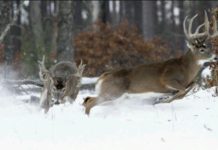
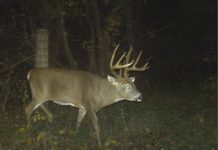

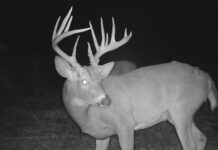




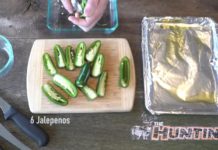
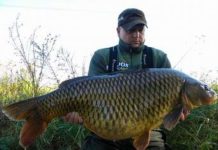
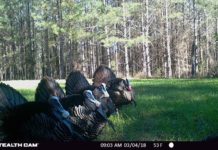
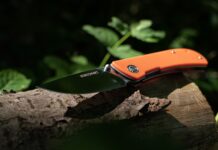
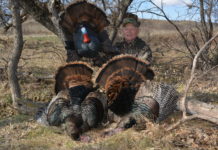

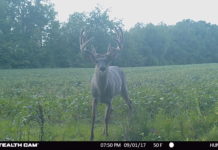
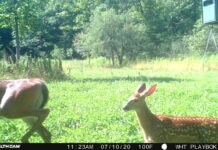
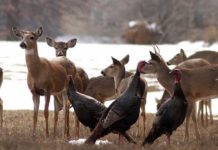
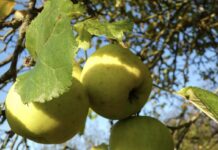
![The Best Deer Camp Chili [VIDEO] Deer Chili Ingredients, Tomatoes, Chili Spices](/wp-content/uploads/2015/10/Deer-Chili-Deer-Camp-Recipe-218x150.jpg)
![How to Call Elk Early in the Season [VIDEO]](/wp-content/uploads/2016/08/byers003-218x150.jpg)
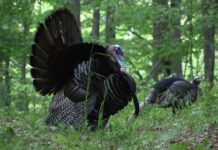



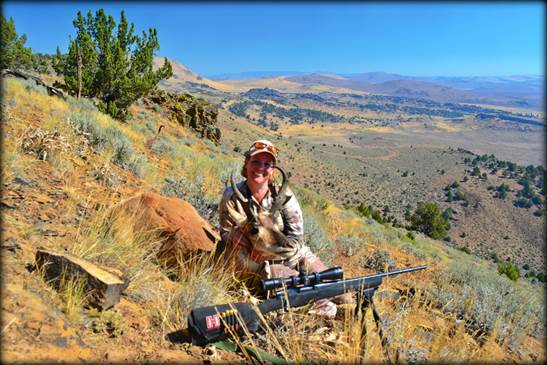
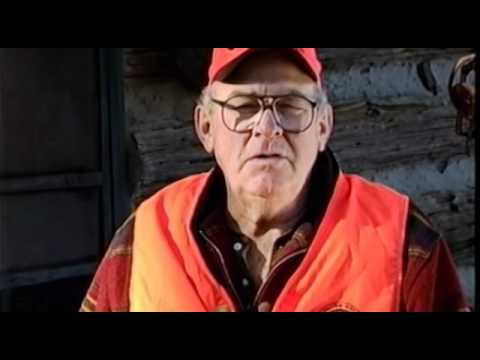
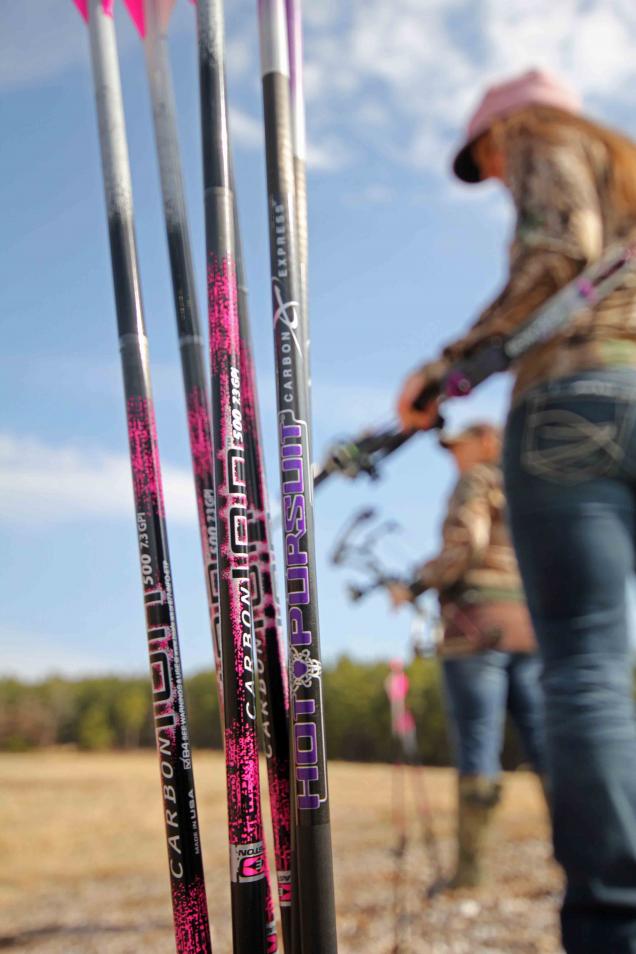



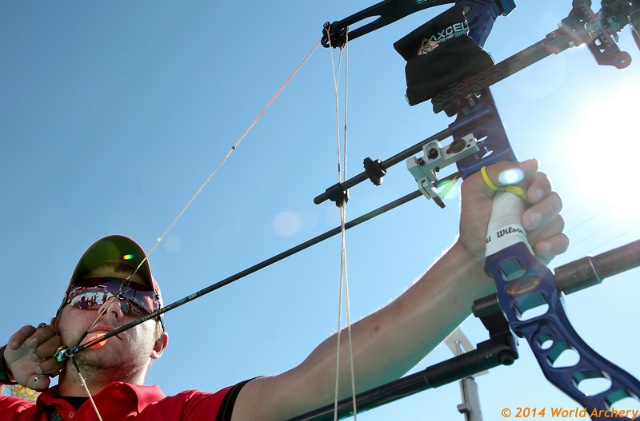


![Idiots Disturb Hunter: How Would You Have Handled It? [VIDEO]](/wp-content/uploads/2015/10/DSC00110-e1474487693878-100x70.jpg)
![Albino Buck Shocked to Shed His Antlers [VIDEO]](/wp-content/uploads/2015/10/AlbinoDeer-100x70.jpg)